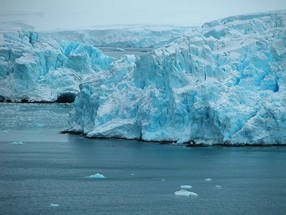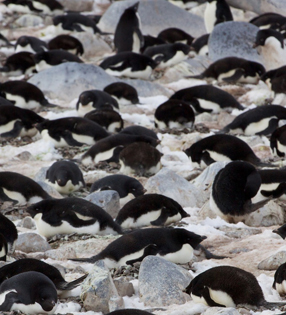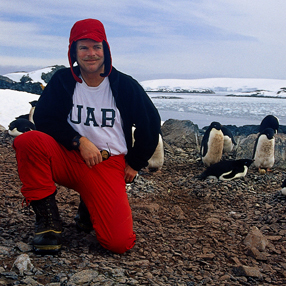
I am anchoring from home base this field season, remaining at UAB while the field team digs in at Palmer Station. I will be busy assisting Chuck submit an NSF grant proposal that will keep our Antarctic program moving forward, assisting Julie submit a manuscript on the impacts of ocean acidification on marine invertebrates from work she did last year, and giving presentations and book signings for my recently released Lost Antarctica – Adventures in a Disappearing Land (www.lostantarctica.com).
I have to admit I am jealous. I checked the Palmer Station web cam yesterday and there was the ship – the Laurence Gould – tied up at the dock. I could imagine Chuck, Maggie, Kate, Julie, and Kevin greetings old friends with hugs, the excitement of checking out the familiar lay of the land (except for Kevin – who is new to the landscape), a quick run into the laboratory to see if the supplies and equipment had arrived and laid out in boxes ready to be unpacked, and the smells of the ice and rock and elephant seals. I suspect that Chuck and Maggie glanced warmly at Amsler Island, and that Kate and Julie heard the distance roar of the Marr Glacier dropping ice into Arthur Harbor.
As I sit here in my office in Campbell Hall I think of our field team ensconced in a tiny research station with 44 souls, perched on a tiny speck of an island off the central western Antarctic Peninsula. How dynamic their environment has become over the past forty years. It’s as if someone had hit the geological “fast forward” button and simultaneously cranked up the thermostat. The Marr Glacier behind the station is cracking up and falling apart, receding by unprecedented leaps and bounds. Ice sheets up and down the Peninsula are being shed, some as large as entire states, freeing up land-based glaciers to flow at unprecedented speed into the sea, contributing to sea level rise that coastal inhabitants displaced by Sandy have come to view with newfound respect. And the annual sea ice, whose seasonal ebb and flow has shaped the evolutionary ecology of Antarctic marine invertebrates, birds, and mammals, continues to recede, now only sixty percent of what it was just forty years ago.
Perhaps the most iconic symbol of the rapid climate change engulfing the Antarctic Peninsula is the tuxedoed Adélie penguin. This morning, weather permitting, the members of our UAB team can see Torgersen Island, almost within swimming distance of the station. For seven hundred years Adélie penguins have colonized the island. In 1975 there were 15,000 breeding pairs of penguins on the island. Today there are only 2,000 left. They have been pummeled by climate change. With warmer, moister air, unseasonable snow storms are burying adults on their nests, drowning the eggs in the resultant melt-water. In addition, the annual sea ice that provides the Adélie penguins a platform to reach their rich offshore krill feeding-grounds has receded. Now the penguins carve into their precious energy budget to swim great distances to reach their food. 
This past December I delivered an extreme-weather video camera, solar panels, and supporting equipment to Palmer Station as part of a philanthropic cruise I lead each year for Abercrombie and Kent Travel. With support from those in the NSF Long Term Ecological Research Program and Lockheed Martin, the video camera is now operational. The first of its kind in the world, it sends minute by minute images of Adélie penguins on Torgersen Island.
I just checked the live image this morning and discovered the penguins have left for the season. The good news is that they will be back next October for five months of mating, laying eggs, and raising their chicks.And you can follow along!:
http://www.usap.gov/videoclipsandmaps/palWebCam.cfm